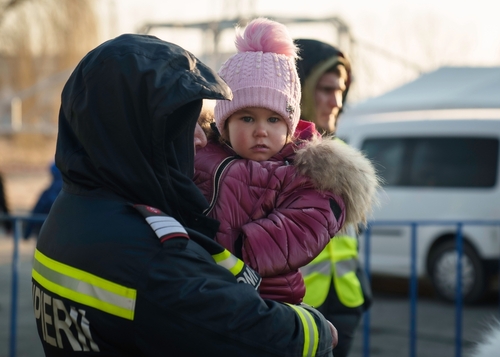Belgium, (Brussels Morning Newspaper) 10,000, 18,000 to 30,000 missing children in migration between 2016 and 2020. These are the rough figures from one year ago and concern only an estimate. The figures for 2021 and 2022 are unknown. Unfortunately, there are no regular and official publications on statistics. This week, the European Parliament discussed once more the situation of missing children in Europe.
In 2018, I wrote a book about it to create awareness: Where are they? Who is protecting them? Why don’t we find them? No one knows. Today, I want to bring this mind-shocking reality again to everyone’s attention, because this remains an unacceptable situation in a Europe based on fundamental values. The protection of children, regardless of racial and ethnic origin, religion or belief, disability, nationality, residence status, sex, and sexual orientation, is one of the main objectives of the European Commission and is in line with the EU Charter of Fundamental Rights and the EU Strategy on the Rights of the Child and the Security Union Strategy. As highlighted in the Council of Europe’s Strategy on the Rights of the Child (2022-2027) “violence against children is both a driver and consequence of children going missing and might be linked to multiples causes, such as violence, trafficking, sexual abuse and exploitation (…), mental health, neglect or weaknesses in the child protection system.
The illegal invasion of Ukraine has only exacerbated the problem. UNICEF and UNHCR estimate that more than 100,000 of those forced to flee the conflict are unaccompanied minors. In this emergency context, they are at great risk of falling victim to violence, abuse, exploitation, or human trafficking networks. Civil society organizations, such as Missing Children Europe and AMBER Alert Europe, have called for comprehensive approaches to supporting and protecting children (at risk of) going missing, such as the Common European Approach On Missing children and Missing persons aimed at improving the search of missing persons with priority and special attention to missing children considering their vulnerabilities.
Moreover, there is no regular publication of statistics on missing children in the EU. The European Commission 2013 report is the only EU-wide report bringing together missing children data from all Member States and sets the number of children reported missing to law enforcement at 250000 in one year. According to AMBER Alert Europe, 300,000 children are missing every year by European Law Enforcement Authorities. Missing Children Europe’s annual data collection from the 116 000 missing children hotlines shows three main contexts. In the majority of the cases children run away, in the second instance children are subject to parental abductions and in the third place, disappearances concern children in migration. These situations need our attention.
In 2021, the EU Council adopted conclusions on stepping up cross-border police cooperation in the area of missing persons. The European Commission also launched the EU Strategy on the Rights of the Child which recognized past initiatives addressing missing children and the need to support and improve the sustainability of the 116 000 hotlines. In early June 2022, the Council adopted Conclusions on the EU Strategy on the rights of the child, which encourages the Member States to continue strengthening measures and alert processes to combat child abduction and to pursue the establishment of a network of national contact points to promote coordination between the Member States.
However, there is still a clear gap when tackling the issue of missing children. Current EU legislation details that collaboration between law enforcement authorities should be activated immediately when the disappearance or threat constitutes criminal activity, which can be immediately investigated in the EU. However, most cases of missing children do not have a criminal component or when the disappearance is reported, it is often not known if this is the case. Also in these instances, the missing child can be at risk of life or serious harm. When lacking the criminal component, the tools of Law enforcement authorities are limited, particularly when it concerns cross-border cases.
In addition, we do not tackle the root causes of the disappearances. Why do children abscond and what can we do about it? This should be our main concern: prevention is better than cure. Among others, drivers of children going missing include weaknesses in child protection systems, failures in the asylum systems or a lack of it, inadequate migration policies and legislation, family separation and conflict, and so much more. In the end, our own system fails them and forces them to abscond. It is our responsibility to fix it.
The longer children are missing, the greater the risk of life or serious harm. For all these reasons, we need a comprehensive and cross-sectoral response bringing together all relevant national, regional and local authorities, including law enforcement, child protection authorities, education systems, and health workers. This is essential if we wish to improve the protection of children, especially in cross-border cases. First, we need an effective action plan that supports and protects children on the run, tackling their situation in a 360-degree manner, a rights-based approach that puts children at the center with more child-friendly procedures that do not scare children off.
Second, it is equally important to set up a comprehensive plan for missing children in general, addressing all the root causes as well as enabling an appropriate response and coordinated ways of cooperation among national law-enforcement authorities to perform a proper follow-up when a child goes missing. Third, we must develop comprehensive and sustainable reporting, data collection, and statistical mechanisms for missing children. Finally, we must continue to urge our Member States as well as our colleagues in the European Parliament to put the child at the heart of the Migration Pact, which is currently being negotiated. If we want to prevent the creation of a lost generation in Europe, it is now or never.



